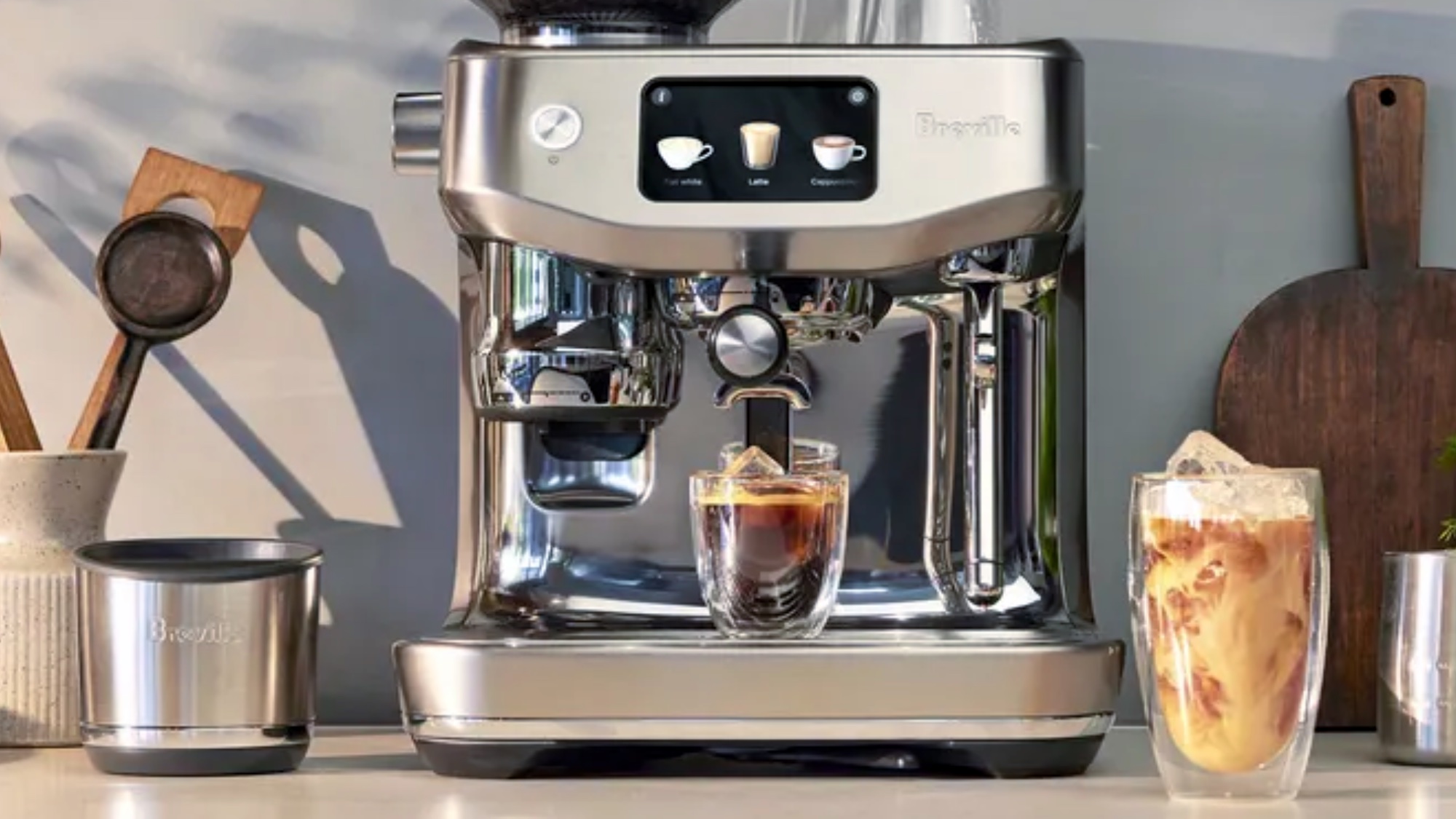
I've got a constant queue of coffee makers waiting to be tested in my kitchen, but if I could only have one, I'd have to go for a Breville. My machine of choice (when I'm not reviewing the best espresso machines) is the Breville Touch Impress, but when I heard that the brand was releasing the Breville Oracle Jet, a souped-up new machine with cold-brewing capabilities, I knew I had to try it for myself.
Released to American audiences in August, and for European shoppers (where it's called the Sage Oracle Jet) in early October, the Breville Oracle Jet is one of the brand's more expensive machines, coming in at $2,000 (or £1,700) and featuring an ultra high-res touchscreen and too many user-friendly features to count. This machine makes so many thoughtful fixes to common espresso machine problems that it's actually hard to know where to start listing them all.
You can keep reading for all the little things I love about this machine, but if you're wondering if it's right for you, I'd recommend it to those who really love quality coffee, but lack the time (or barista skills) to achieve it with a fiddly home setup. With a phone-like touchscreen boasting a full coffee shop menu, it's like having your own personal barista in your kitchen.
Breville Oracle Jet: Specs
Breville Oracle Jet: Price & availability
The Breville Oracle Jet is available direct from Breville, as well as retailers such as Williams Sonoma and Crate and Barrel, for $1,995 at full price. It comes in 5 colors, from the brushed stainless steel I tested to a plush damson blue.
In the UK, where the brand is called Sage (and where, you might notice in the branding of the model I reviewed, I tested this machine) it's £1,700 at Sage and John Lewis.
Price-wise, it's actually a step down in price from the rest of the Oracle lineup. The OG Oracle is $1,199 and the Oracle Touch comes in at a bank-breaking $2,799. It's $500 more expensive than the Barista Touch, the machine that lives in my kitchen full-time, so is it worth it?
Breville Oracle Jet review: Design
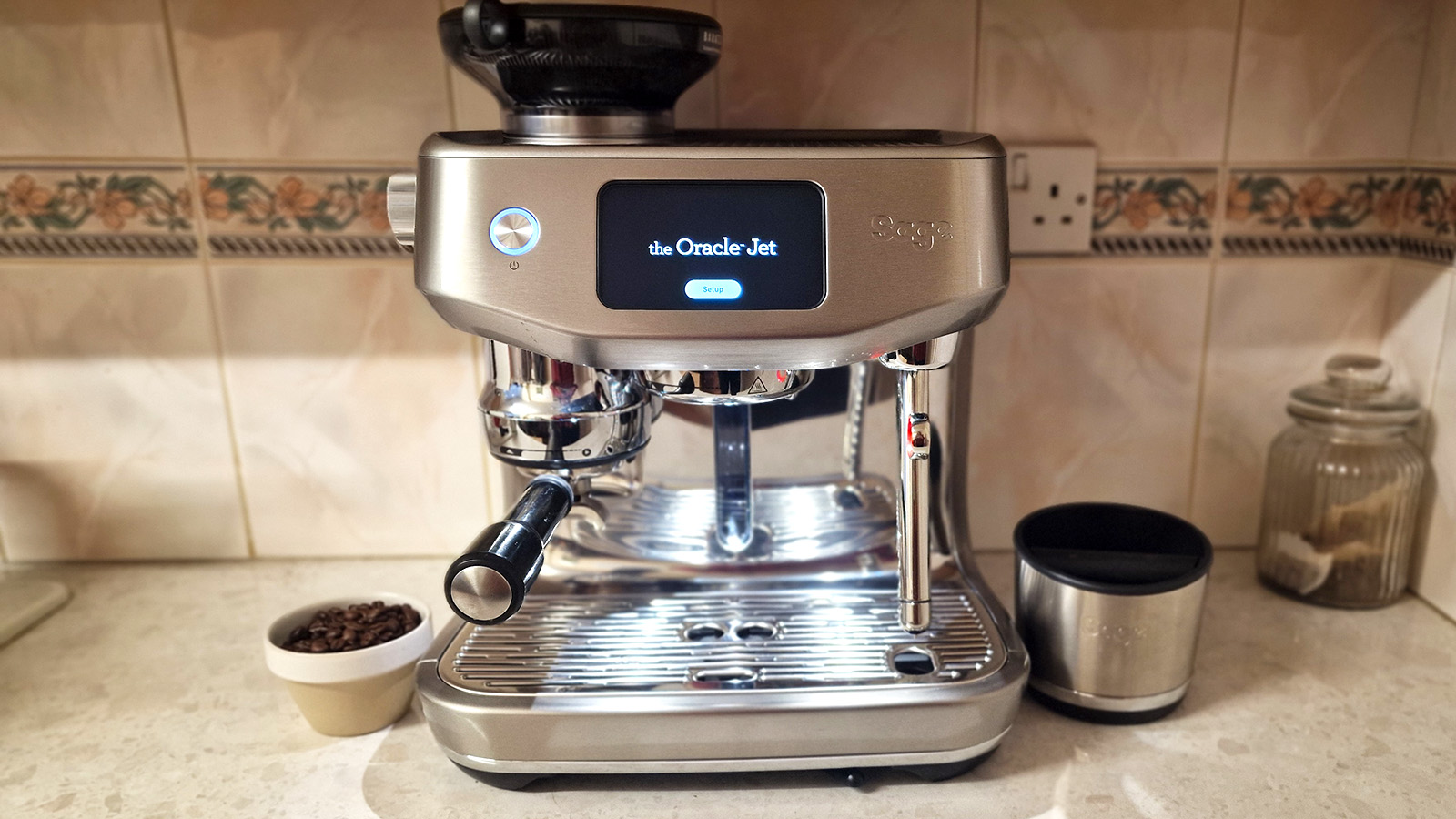
At first glance, the Breville Oracle Jet is brash and impressive from the second you take it out of its box. The machine comes with a knock box — a nice touch — as well as a barista-standard 58mm portafilter and a single and double shot basket. There's a lovely light that shines from under the control unit onto the drip tray to illuminate your drink as it brews, and the super-responsive touchscreen will walk you through the initial setup process, and (if you choose) just about any drink you wish thanks to its in-built guidance.
The 77 fl.oz water tank is removable — albeit in quite a trick way from the back of the machine — but one of my favorite things about the Breville Oracle Jet is that you can refill the water tank from the front thanks to a flip-up spout at the top of the machine. I found that it was best to do this is a decent jug, because doing a cup before each use won't be enough to prevent you having to refill every time you use the machine.
One element of this machine that really pleased me is that it's on wheels! If you pull a lever underneath the drip tray, it'll hoist the machine onto its hind wheels, and you can then shimmy it all over your kitchen counter without having to drag it. It makes refilling the bean hopper a lot easier.
Breville Oracle Jet review: Performance
Grinder
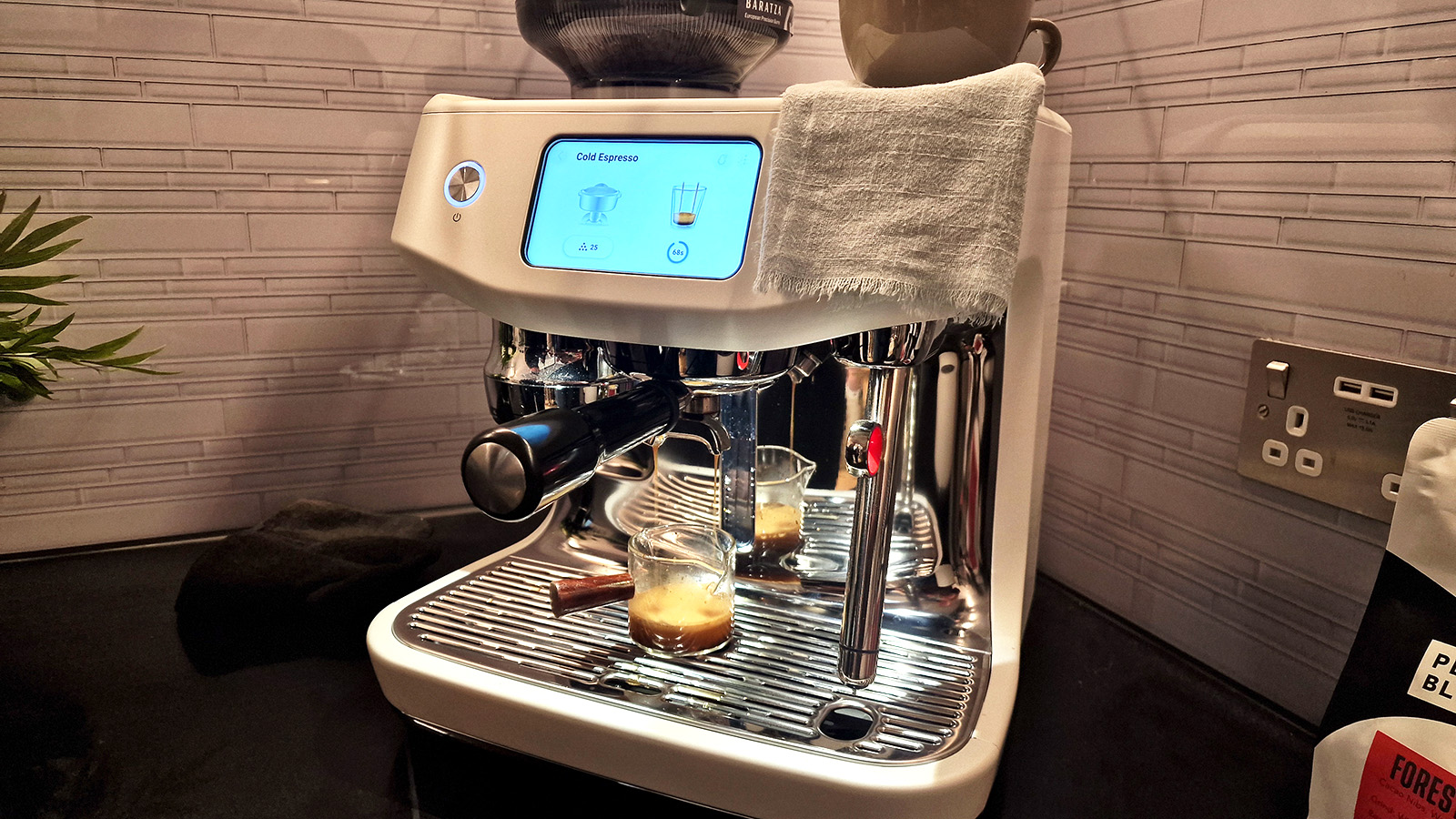
The first thing you'll need to do with this machine is master its grinder. It features European precision burrs by Baratza, with a total 45 grind settings to choose from — as opposed to the Philips Barista Brew, which only has 15 (although does cost about a third of the price).
When getting started with this machine, you'll have to brew a lot of espressos in order to get the perfect grind size. It's a worthwhile exercise, with the machine walking you through the whole thing, but it took me about 5 attempts (and a lot of wasted coffee) to create an espresso that the Oracle Touch deemed acceptable.
The machine will continue to suggest you change the grind size using the dial to the left side of the machine as you switch between beans or drinks, and because the grinder works on a volumetric system, meaning it measures the weight of ground coffee as it's dispensed and automatically stops when the desired weight is reached, you'll never grind too much or too little for your basket. That's one less thing to worry about.
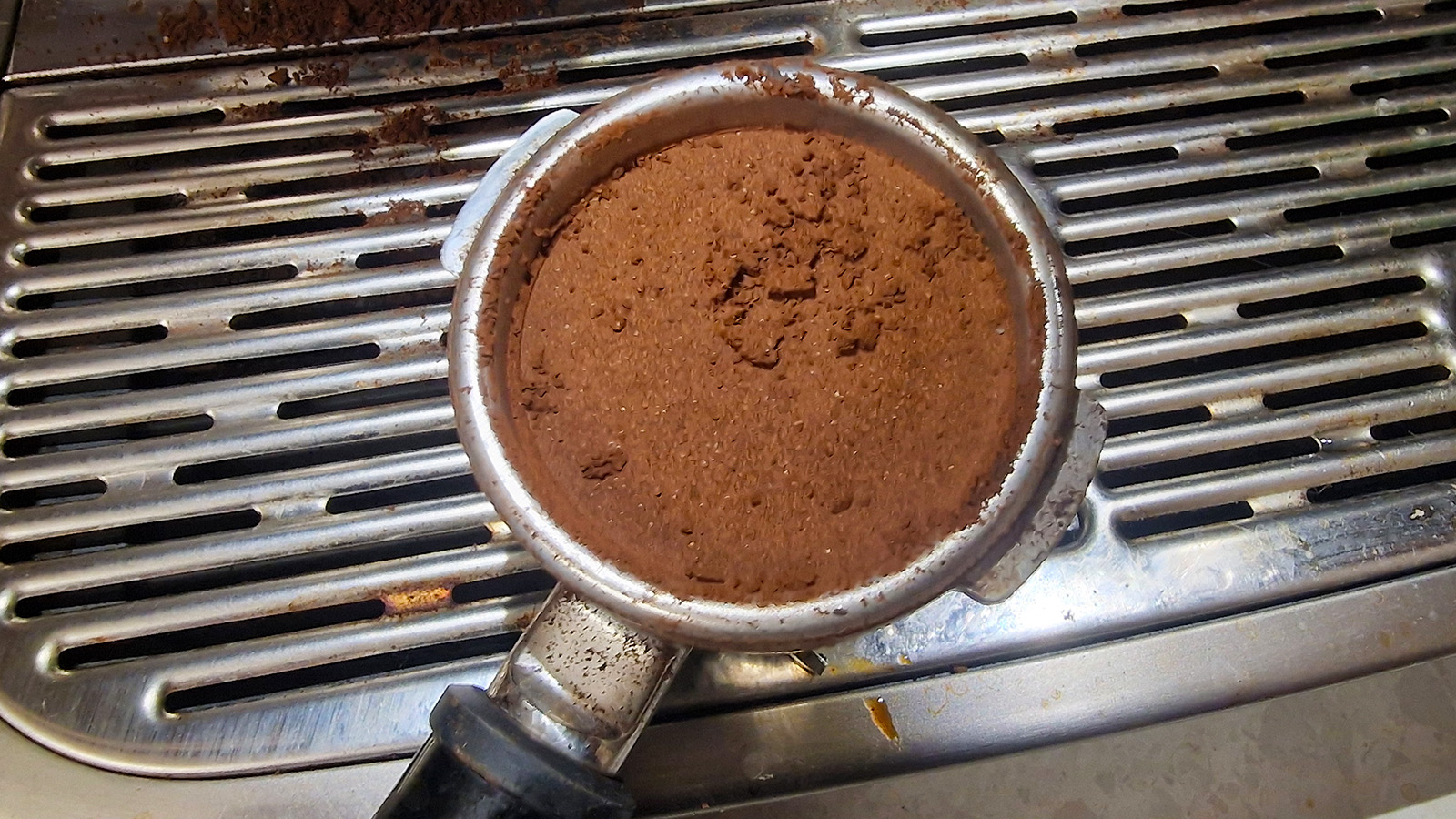
Another thing that this machine takes out of your hands is tamping. Every puck comes out evenly tamped, as if by magic, ready to be locked into the group head. My one complaint with the grinder is that it consistently leaves a little sprinkle of loose grounds on the top of the puck, which probably doesn't have a huge impact on the finished drink, but did slightly diminish my otherwise perfect puck.
A final thing to note is that this grinder would usually release an extra sprinkle of grounds onto the drip tray when I moved the machine, so it's a little messier than other options.
Espresso
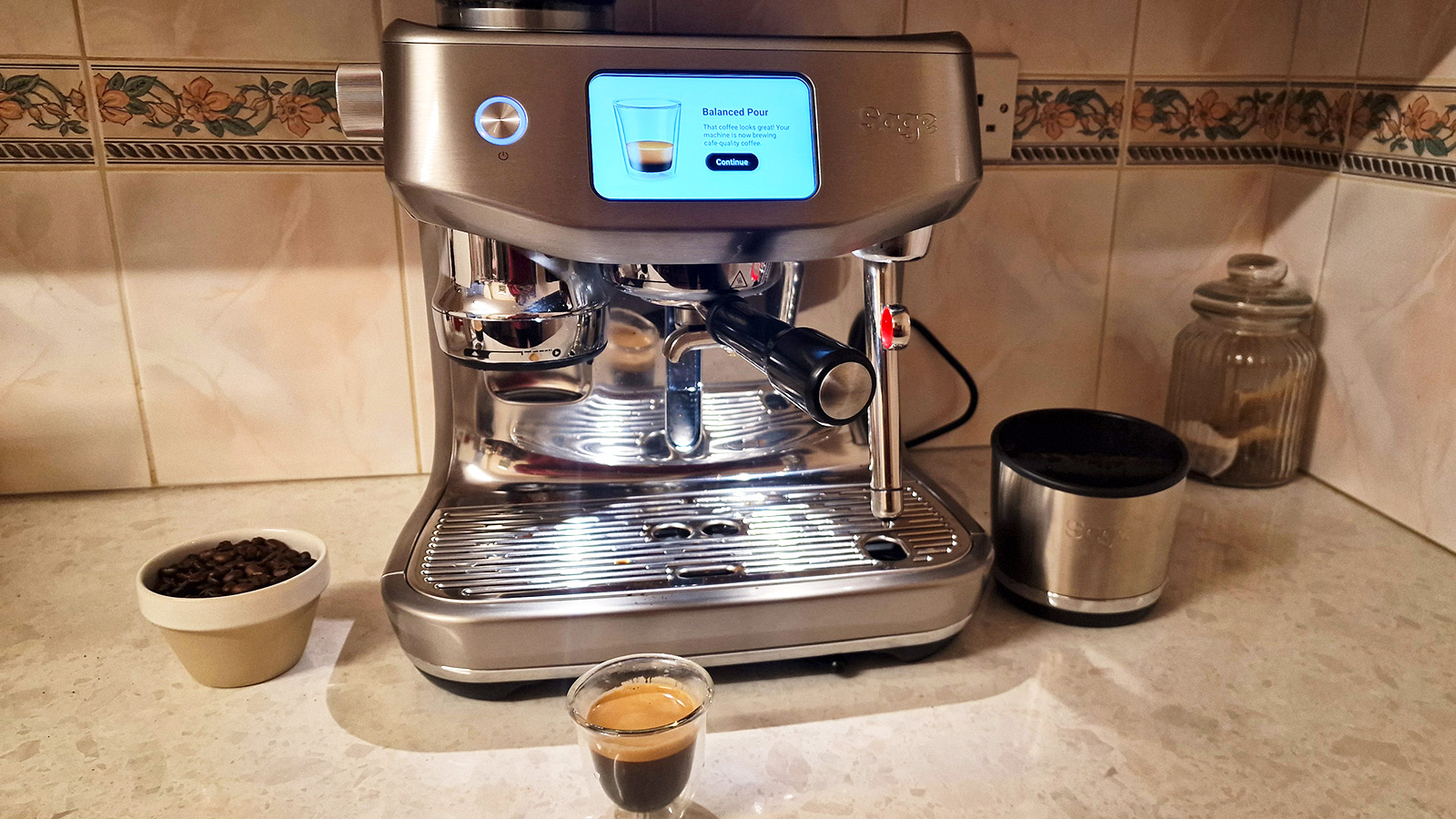
I really can't complain about the espresso this machine creates. Creamy, rich, evenly-extracted, the Breville Oracle Jet was able to bring out the subtlety of specialty beans but also turn a cheaper store-bought option into a pretty tasty base for a milky drink. I drank it straight on a number of occasions, and topped it up with hot water to make a black coffee every morning.
When you choose your drink on the touchscreen panel, it'll walk you through the grinding and brewing process, so you simply need to touch the image of your espresso pouring and the machine will start to pre-infuse your puck. It doesn't show any pressure level, but it does show a timer, and if your coffee falls within the optimal time range it will turn green. Too fast or slow, and it'll turn red, and a guide will come up telling you to change your grind size ahead of your next drink.
Again, my only real qualm with the brewing of this machine is that it's just a little messy. The portafilter would reliably drip over my counter when I went to tap out my spent puck, and when I topped my espresso up with hot water to make a black coffee, the hot water spout (which points directly into the coffee cup) got very splashy.
Cold brew
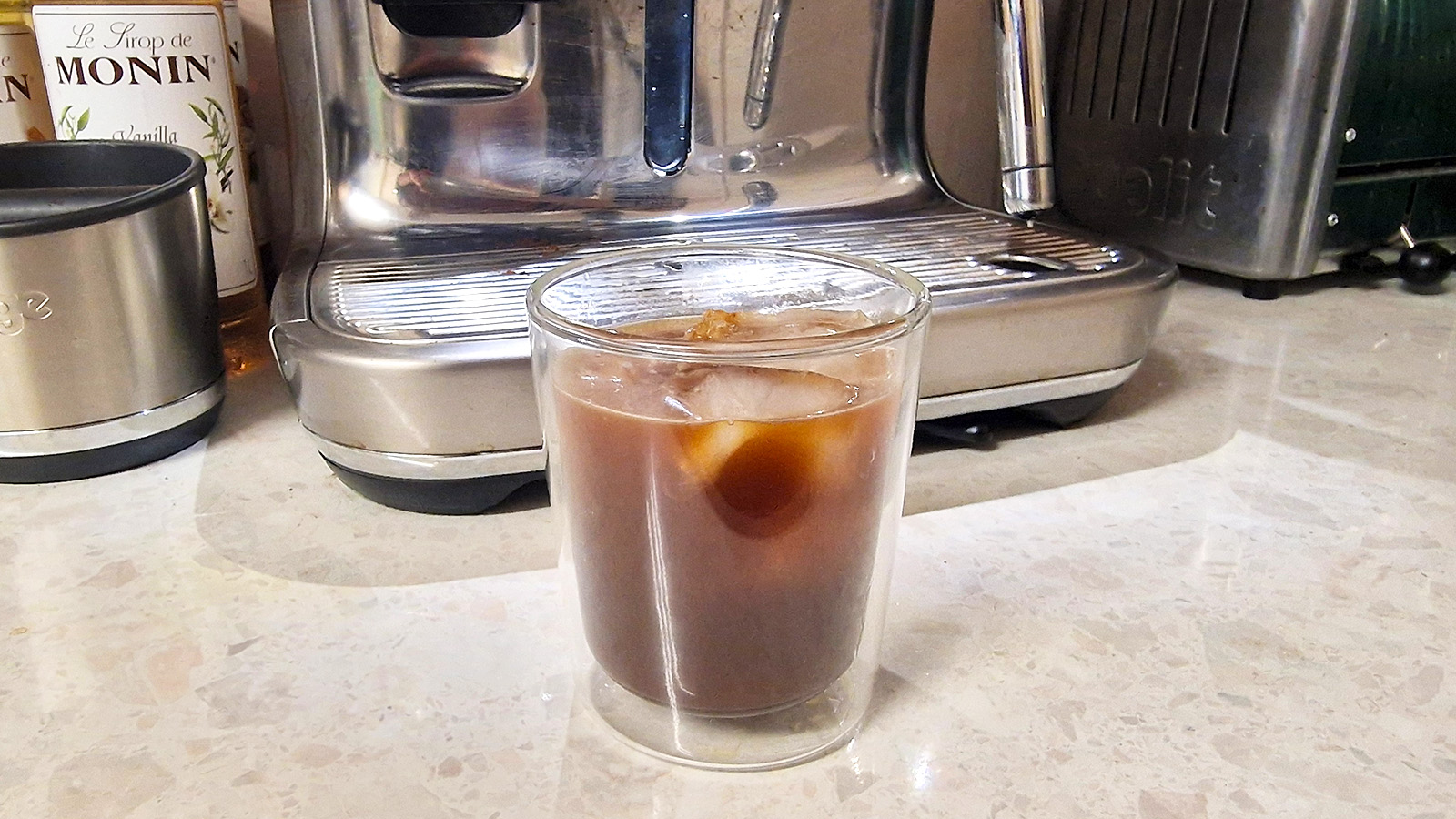
I was so excited to learn that the Breville Oracle Jet makes cold brew. More specifically, it makes cold espresso (a short shot that is ideal for iced latte) and a longer drink, more akin to a traditional cold brew.
By brewing at lower temperatures, I found the machine was able to bring out a fruitier, lighter quality to my coffee that made a really refreshing drink over ice. The cold espresso was also great, with a small layer of pale crema and a more gentle flavor that still wasn't overpowered when paired with milk and some flavored syrup.
The brewing process takes longer due to to the lower temperature — about 3 minutes for a cold brew, and a 90 seconds for the cold espresso. Still, it's a lot faster than regular cold brew, which takes 12-24 hours!
Milk-based drinks
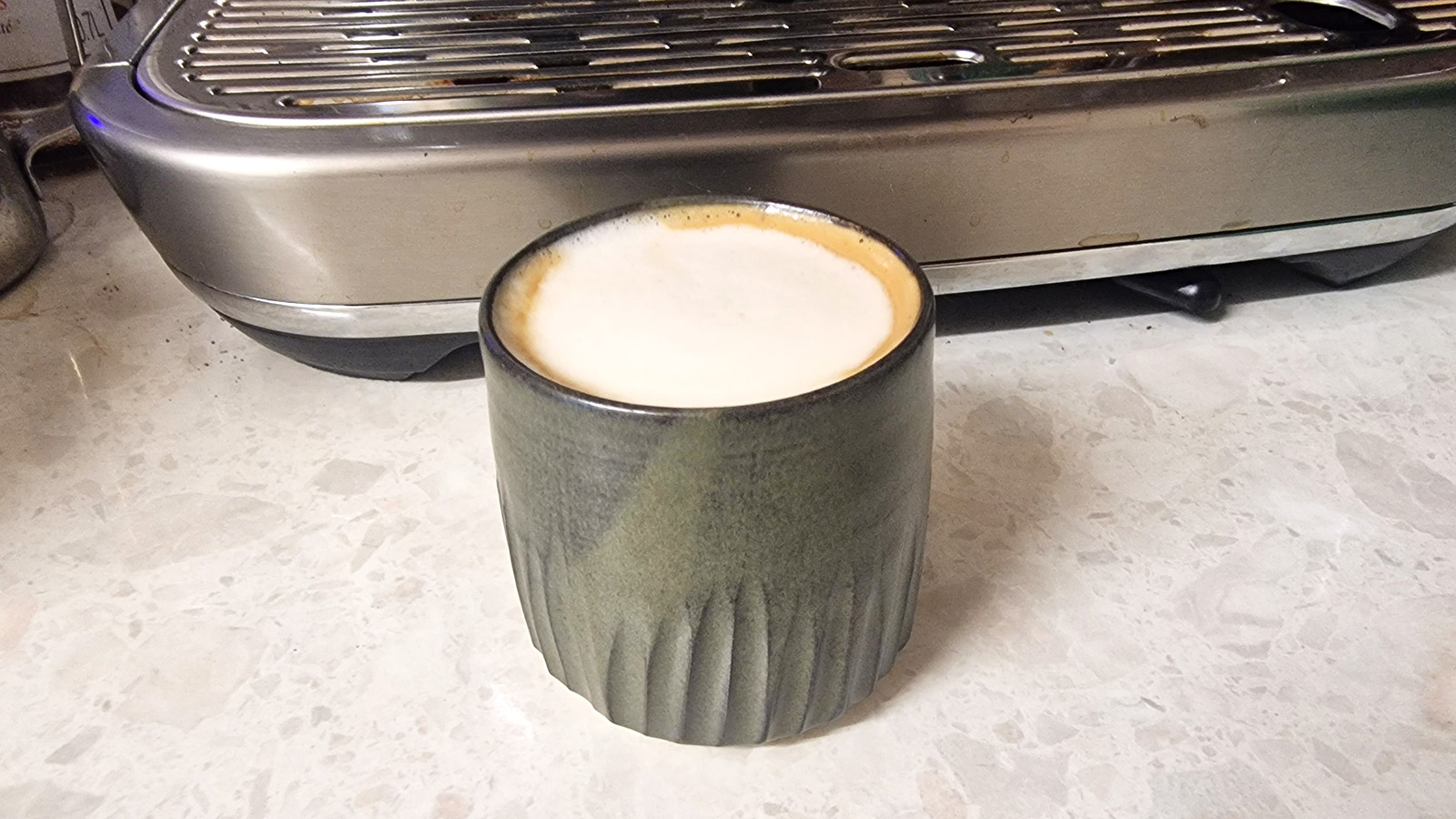
A new development for the Oracle Jet is Breville's 'Auto MilQ' steam wand, which comes with settings optimized for dairy, soy, almond and oat. This steam wand has an in-built temperature sensor (unlike the Barista Touch, which has a temperature sensor that will read the temperature of your jug when it's resting on the drip tray) so that even if you choose to steam by hand, it will still give you smart temperature readings and tell you when you're at risk of burning your milk.
I recently did some SCA Barista training, so while I like steam wands that can do the hard work for me, I do still like having the option of hand-steaming. The ability to do both is a big win, and while I had more precise results when steaming by hand, it was great to be able to select my drink of choice (flat white, latte, cappuccino, etc) and my milk (oat, almond, soy, dairy) and leave the wand to get the temperature and texture right.
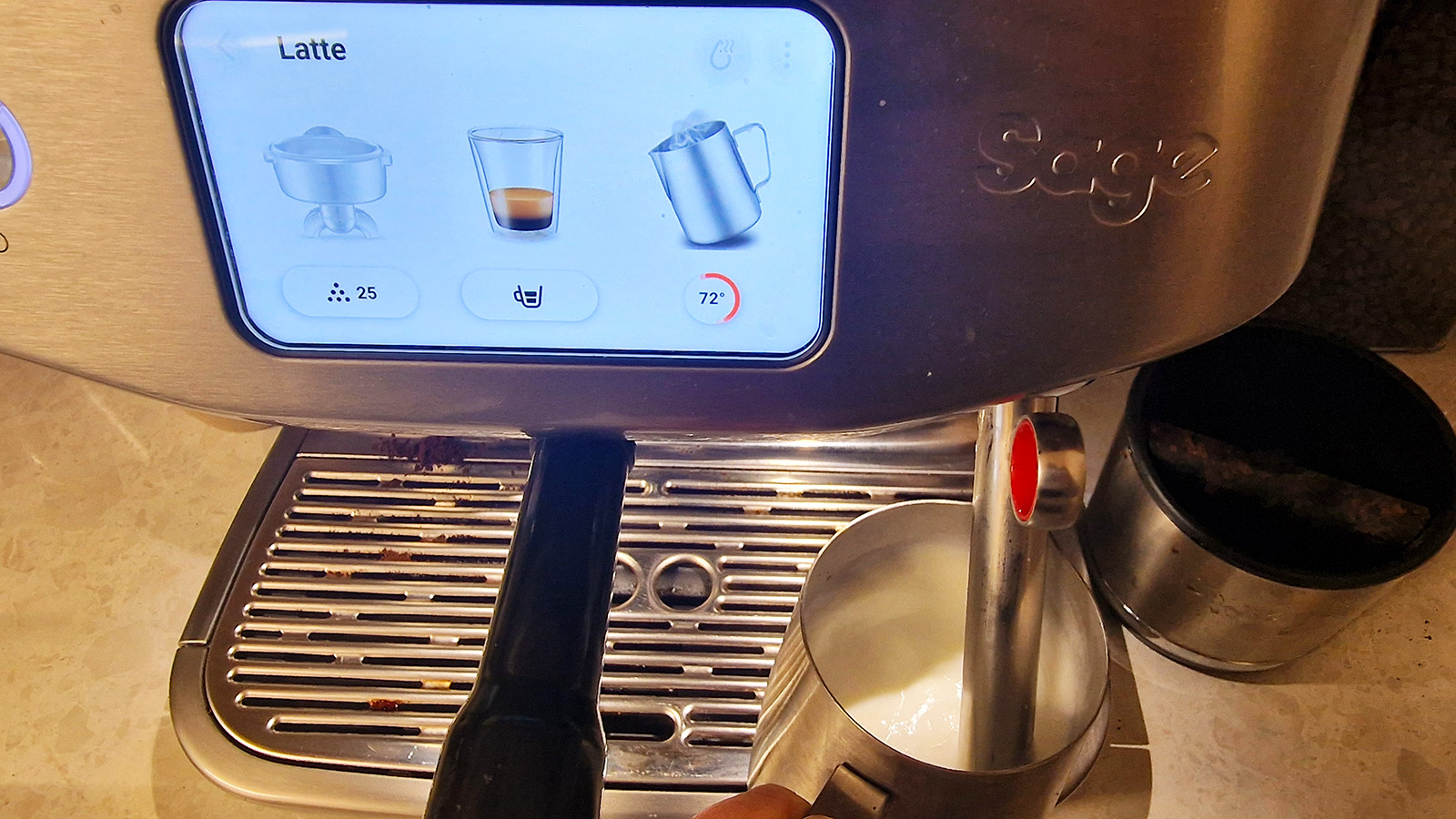
My own machine is the Breville Oracle Jet, and I find that the automatic steaming on this machine leaves me with a slightly better milk texture when left to steam automatically, although there's not a lot of difference.
Another qualm is that the milk jug included with the Oracle Jet has minimum and maximum milk level markings, but the minimum is quite a lot for just one drink. As someone who likes a shorter coffee, I'd have liked to have the option of steaming small volumes of milk. However, there's no denying that this machine makes brilliantly glossy milk with next-to-no effort.
How does the Breville Oracle Jet compare?
The Breville Oracle Jet is best compared to the De'Longhi La Specialista Maestro, which is De'Longhi's most souped-up flagship model. It has a lot of the same features: cold brew, automated brewing and grinding assistance, the option of both automatic and manual steaming, and an in-built tamping wand that keeps mess to a minimum. It's also notably cheaper at $1,199, and for the money, it might be better value for some users. For a start, it does make a brilliant espresso and cold brew, and it also looks fantastic on any kitchen countertop. On the downside, though, the Maestro has only 8 grind settings and the automatic milk steamer is a plug-in jug that resembles a lot of superautomatic machines. It's a bit less smart, but it makes good coffee.
Another great comparison would be the Ninja Luxe Café. It's a very affordable $499, and offers a lot of the assisted brewing you'll get with the Oracle Jet, such as grinder guidance and both manual and automatic steaming. It also makes cold brew, as well as cold milk foam, unlike either of the other machines mentioned. The grinder has 25 settings and, again, is just less smart than the Oracle Jet. It's also insanely good value for the price, though, and has a pressure gauge if you like getting technical.
Breville Oracle Jet review: Verdict
Got a spare $1,995? Yeah, me neither. But if I did, I'd consider spending it on the Breville Oracle Jet. There's no end of thoughtful features here with this coffee maker, and most importantly, it brews nuanced and balanced brews thanks to its high-quality grinder and automated brewing settings that reduce the margins from human error as much as a semi-automatic machine can.
While the Oracle Jet gets so many detailed things right, I do think it could do better at some of the basics. The grinder, while a super-smart volumetric design, leaves a sprinkle of grounds on the drip tray after each use. The hot water dispenser, while conveniently angled to point directly into your cup, can be quite splashy. And the steam wand, which comes with a game-changing in-built temperature gauge, doesn't quite beat my Touch Impress at making barista-quality steamed milk hands-free.
With that being said, the Breville Oracle Jet's smart features well outweigh any cons. The ability to make cold brew is game-changing, and if you enjoy buying quality beans, this machine will bring out the best in them.







